We met with Mr. Marc Aellen, CEO of the Certina brand, in Warsaw on April, during the event organized by Certina Poland Team to present the latest watch collection for 2024. Event also served officially announcement of the collaboration between Certina and the Polish Padel Federation. Mr. Aellen agreed to have a conversation with us during this meeting.
We invite you to read the interview with the CEO of Certina, where we discuss, among other topics, the decision to withdraw from motorsport sponsorship and involvement in padel, current market situation, trends in the watchmaking industry, ongoing digitalization and Certina's future plans.
Maciej Kopyto: A warm welcome and many thanks for taking the time to have a conversation about Certina brand.
I suspect that, like me until recently, some of our readers may not know what "padel" is. Could you tell us a bit more about the history and rules of padel?
Marc Aellen: Padel is a sport of growing popularity that combines elements of tennis and squash. It originated in Mexico, specifically in Acapulco, where Enrique Corcuera modified his private squash court in the late 1960s to include aspects of tennis. Initially, the walls and surfaces of the courts were concrete. What’s interesting, at first, spectators couldn't watch the matches. However, as padel's popularity grew over the years in Mexico, as well as in Argentina and Spain, and matches began to attract viewers, the courts were modified to include stands for spectators.
Padel became very popular in Spain, where it appeared in the mid-1970s. By 2005, there were already over 1,000 clubs there, but its dynamic growth began in 2010. Today, it is considered by many to be the fastest-growing sport in the world. Padel has become one of the main sports in countries like Spain, Italy, Sweden, France, and Portugal, and it is also flourishing in the USA and Canada. It used to attract a few hundred people, but now tournaments can gather thousands of fans in the stands and hundreds of thousands in front of TVs.
Padel is played in doubles, with two players on each side of the net, and the rules are very simple, similar to those in tennis. I have been playing tennis for many years, around 30 to 40 years, and I must admit that it is a very demanding sport. However, padel is a game accessible to almost everyone, regardless of age. It does not require excellent physical condition or years of training to be able to step onto the court and just start playing, of course, for fun as an amateur.
You mentioned that you've been playing tennis for many years. What is your experience with padel?
Yes, I have been playing tennis for about 40 years. If I have a choice, I prefer playing tennis because it's more my world, a sport I've been involved with since childhood. But I would say that at my age, or if you are over 30 and have never played tennis, it is difficult to get into this sport. The advantage of padel is that it is much easier and that's why it is becoming so popular, because you can start at any age. You can derive a lot of enjoyment from the game quite quickly, which is not the case with tennis. Tennis can be a frustrating sport.

And what about other sports? You also mentioned earlier, when we talked during the event, about playing golf. How does that relate to padel and tennis?
I've tried playing golf a few times, but it's definitely not for me. Maybe someday, but it takes a lot of time, which I currently don't have. I ski a lot. I play tennis. I walk, hike, and so on. So I have to decide how to allocate my time. Maybe someday golf, when I retire? Maybe. But it's a sport that we should learn. I think it’s also quite a frustrating sport. And you really have to practice, just like with tennis.
That's true. I've been trying to play golf for a few years, learning to play, but it does take a lot of time. Plus, it's a game that requires a lot of precision; you have to be almost like a robot.
I don't know if you've seen that film where they recorded Tiger Woods hitting 100 consecutive shots. I think 99 were exactly the same. I mean, he made the exact same move. It's crazy.
Yes, that's true. And that's why the ease of playing padel is a great advantage of this sport.
OK. Sports and watches often go hand in hand. Rolex and Omega are associated with golf, Hublot with soccer, TAG Heuer with sailing etc., should Certina be associated with padel?
Yes, definitely. That's how it should be.
We are the only watch brand that, at this stage, is involved in and engaged with padel. Of course, maybe someday other brands will join in. But yes, right now we want to be associated with this game.
I think if you go to Google and type in "padel" and "watches," you will see content directly related to us. So we have already taken the necessary steps to be here, and we want to keep doing it.
Indeed, it is as you say. I did some research on the Internet while preparing for our conversation and that's how I came across Marta Ortega, or rather a film with her. A promotional film in which she talks about your collaboration, the watches, and the game. It was new and interesting to me.
One more question comes to mind: what was the reason for the decision to engage as a brand in this particular sport?
That's a good question. Initially, as a brand, we were involved in motorsport; there were even special edition watches with Robert Kubica, but we wanted to be more environmentally responsible, so we decided to move away from motorsports and looked for an alternative.
We now have two sports. One of them is cross-country skiing because historically we are very strong in Scandinavia, where this sport is like a religion. And then we looked at other sports, and padel came to us quite naturally. It was also a request from our colleagues in Sweden, and we said: OK, let's do it.
It's great fun. It’s growing very well. It's really more of a hobby than a professional sport and that's exactly why we wanted to develop in this direction. We partnered with Marta Ortega, as you mentioned, who is currently ranked No. 3 in the world. She is one of the top Spanish players and that's the direction we will continue to pursue.
So, it's not so much about timekeeping, like it was in motorsport, but more about emotions and spending time together, right?
Exactly, it's about having fun, spending time together, companionship, and building relationships.


And what about padel in Poland? We have the Polish Padel Federation and we even have some achievements — for instance, the men's team won 3rd place at the European Championships in 2021. What will your cooperation involve?
Certina supports the development and promotion of padel financially. We have just established a partnership with the Polish Padel Federation, which we officially announced during today's event. We are also collaborating with several other federations in different countries, including recently with the German one.
We want padel to become more popular and recognizable worldwide.
Can we expect any special edition watches on this occasion?
Yes, during this event we presented a special watch, but—as you know, it is currently still under embargo and has not been officially unveiled yet. But it will be soon.
We’ve talked a lot about sports already. Now I would like to talk about our industry.
You have extensive experience and observe the market closely — what are the most noticeable trends you've seen in the watch market over the past year? How has Certina responded to these trends?
I would say one of the most significant trends is the increasing number of inquiries and requests for mechanical watches. It turns out that despite the introduction of smartwatches, ultimately people, when they want to buy a Swiss watch, prefer to choose really good mechanical watches that don’t need to be charged every evening, unlike smartwatches.
We also saw in the past that there was a trend for smaller watches, and we are also responding to those customer demands. Additionally, there has been a strong ongoing trend regarding heritage and all those vintage watches that old brands with rich histories, like Certina, can offer. That's why we also searched our archives and last year, in line with the trend, introduced new models, including the contemporary version of the vintage watch you’re wearing, the Certina DS-2. So that is also one of the strong trends.
I don’t know if it will last forever.
Actually, no one knows.
Exactly. But for us, it’s a good trend and we can show our customers that we are a brand with a very rich history. It’s quite an interesting trend for us.
You mentioned heritage a moment ago, and I also know that in a recent interview you spoke about the importance of heritage and innovation in watchmaking. How does Certina reconcile tradition with technical advancement to stay relevant in today’s market?
The key fact is that we are part of the Swatch Group. This allows us to have many people working on research and development in movements, materials, etc.
For example, last year we introduced Certina PH1000 which is a watch water-resistant up to 1000 meters. But thanks to current technologies we managed to make this watch much thinner than the original version from the 1970s. So even if we are reintroducing new watches inspired by our brand’s heritage, they will, of course, be equipped with current technical solutions.
Looking at vintage Certina DS-2 on your wrist, I’m not sure about its power reserve, but the model we reintroduced last year features the Powermatic 80 movement, which provides an 80-hour power reserve.
Yes, I'm certain my vintage model doesn't have that much.
No, definitely not. Probably around 40 hours.
That's right, about forty hours. If it had that much it would still be good. But mine has Certina’s "in-house" movement, and that's an advantage (laughs).
Of course, but for us, the Powermatic 80 is also an "in-house" movement because it’s produced within the Swatch Group.
Yes, I know. This discussion is a never-ending story.
Exactly. However, we strive to combine and offer our consumers the latest technical solutions and technologies, even in the case of reissued vintage watches.


Speaking of heritage, with numerous reissues in recent years, like the Chronolympic model in 2023, can we expect releases of models like the "Biostar," "Blue Ribbon," or any other?
Before you answer, I'd like to show you something.
The Certina DS-2 on my wrist isn’t the only vintage model I have in my collection. Here’s the Certina C-Tronic Chronograph with a tuning fork movement. Do you know how it works? I mean the tuning fork movement—it has a battery, but the way it works is different than a quartz or mechanical watch.
OK. But it has a battery that's charged and coupled with a balance wheel?
No, it doesn't have a balance wheel. Nor does it have a quartz crystal that vibrates.
Oh, that’s interesting. Can I take a photo?

Yes, of course. Interestingly, the movement makes a strange buzzing sound. I'm not sure if you can hear it now because we're outside.
I can hear it. Is this a 70's model? I would say so based on its design and appearance.
Yes, that's correct. This model is quite rare. It's a watch with a movement made by ESA. There were also Bulova, Omega, etc. with this movement, but not many brands used it.
And here’s another vintage watch— the Blue Ribbon with an integrated bracelet. And this is the Biostar.
Yes, I know these two models because we have them in our collection.
That's right. So, my question was: do you plan to reissue any of them?
(laughs) Yes, we will.
We have several products in the pipeline. Last year we introduced a new version of DS-7, which is also one of our historical products. But at the same time we want to show our customers that we can innovate, so we don't only focus on archival models.
We've decided to introduce one to two products a year that are related to our history, but you'll have to wait for the details.
Sure, I understand. Certina has vast archives to choose from.
Exactly. I just need to open a few drawers and just like you showed me your four vintage pieces, we have thousands of such models.
Yes, I know, I'm aware of that. I really like this brand.
OK, you also mentioned the importance of storytelling in engaging with consumers. Can you share some information about recent campaigns or initiatives where Certina effectively conveys its brand narrative?
We always try to tell a story. I think it's very important to have a clear message for consumers. It's easier when you're bringing back watches that are part of the brand's cultural heritage because you can tell the original story of those models.
But Certina is also known today, and a big part of our business is our dive watches. So even when we present a new GMT model, it's easy to tell that story because we're also very connected to diving and that's the advantage of being a historical brand—we don't have to force anything. It's really in our DNA. And even when it comes to dive watches we were one of the first brands to produce them.
I have to admit, it’s a bit frustrating to see all brands offering dive watches today, even though they don’t have the same credentials in that field, though they have merits in other types of watches. But dive watches are popular now, so everyone makes divers. But we have genuine credentials, we're a historical brand, so when we develop new products, etc., we focus on what we are known for and what we do well.
So take another look at my wrist – my vintage Certina has days of the week in Polish. I also remember Certina editions with Robert Kubica.
Which leads me to an obvious question – will there be more editions of watches made specifically for the Polish market?
At the moment there are no such editions, but we are having some discussions. We always analyze such things. We’re a very flexible brand. So if there is a request, we will consider it. The problem is that we need a minimum production run to make it happen.
What is the minimum run? 1,000 or 10,000 pieces?
No, it's more like between 500 and 1,000 pieces. We haven't had such an order yet, but we can do it easily. However, such a project is not currently in preparation for any country, not just Poland.
Last year, we had a limited edition worldwide, the PH1000. It's a reissue of an original Certina watch from the 1970s.
Yes, I remember.
And we do these special editions from time to time, but to have a dedicated collection for each country, we haven't done that recently. But, why not?
Why not... with a Polish date? You know, I must say, this is more of a personal observation, but the Swiss brand Epos has made its 4th edition of the watch for the Polish market this year, they make a new one every two or three years. They made 100 pieces. So, it's not a large run, but every time these watches come out, I see people are really interested.
If there’s something related to our country, especially if it’s days of the week function in Polish, not just abbreviations but full names, people react really positively. I'm not sure if this enthusiasm translates to purchases, but since this brand has made four editions, it probably does.
So maybe it's a good idea?
Maybe it is. I'm not saying we won't do it.
Especially since it can be tied to the past.
I'd be happy to lend you my watch if it would serve as an example (laughs).

Let’s move on to the next topic, let's talk about economics. Considering current economic situation, how has Certina adjusted its strategy to remain competitive while ensuring the quality and integrity of its watches?
I mentioned earlier that I joined the Certina team four years ago. Unfortunately, due to the strong Swiss franc, we've had to raise prices frequently, not because our costs changed, it is mainly because of the currency, the strong currency.
So, you took over as CEO right when the pandemic started.
Yes, July 20, 2020. So, yes, in the middle of the pandemic.
That must have been a difficult time to take the reins.
Yes, but on the other hand, we had a great opportunity to really understand the brand because if it was in a normal world, I would have started traveling and visiting markets, but instead, I had a lot of time to sit in the office with colleagues, go through products, and really develop a strategy.
So there were positive aspects to this situation.
Yes, it was a decent time. We had a huge growth in e-commerce then, which depended on me, it was a big push for us in this area, and I came from a very luxurious brand that previously wasn't involved with e-commerce. So for me, it was a good learning experience too.
But we also saw, as I mentioned, a trend towards mechanical watches. But now we see that due to the price increases we had to make, we also need to reintroduce products at the entry-level price point. So in May, and then in the second half of 2024, we will introduce several lower-priced quartz products because there is still a demand, a big demand, for watches at a retail price of around 350–400 euros, which we can't reach with mechanical watches since we're more in the 550 euro range as a starting point. That's something we're always looking for. We always adjust our products to the market.
But as I said, we're a historical brand. We work for the future, so we won't be making smartwatches or anything like that.
OK. So maybe a Certina x Swatch collaboration?
The price ranges are too close.
And even if Swatch's collaborations with Omega and Blancpain have been hugely successful, I think for Certina and Swatch our product price ranges are too narrow.
But these collaborations always generate a lot of buzz, hence my question.
OK. The third part of our conversation concerns current situation and the future. With the rise of smartwatches and various wearable tech devices, how does Certina plan to stand out and how do you intend to continue attracting enthusiasts of traditional watches? This relates to mechanical watches you already mentioned.
Yes, exactly. I think, as Mr. Hayek said at the beginning when Apple introduced its smartwatches, that of course, it's a threat to the watch industry. But on the other hand, maybe it’s also an opportunity that we need to seize, so perhaps younger people who weren’t used to wearing something on their wrist will buy a smartwatch, get used to wearing something and then buy something else.
Because smartwatches are great for everyday wear, but if you want to go out for a nice dinner or when a man wants to wear something nice on his wrist, since a watch is one of the few pieces of jewelry we wear, I think we still have a bright future for the entire industry.
Of course, we see what’s happening, we are very dependent on what happens in the world and right now it’s not the easiest situation. But I think that in the long run people will always be interested in having a nice Swiss watch on their wrist.
That’s likely. You mentioned young people. We already discussed Omega and Swatch, Blancpain and Swatch, I think that’s also one of the main reasons why the Swatch group did these collaborations, because you want to get watches on young people’s wrists so they get used to wearing them.
That's right. That has always been the strategy of the group.
We call it the pyramid. You start with Flik Flak and Swatch watches, then Certina and Tissot, and then you go up to Breguet and so on. To offer watches for a lifetime.
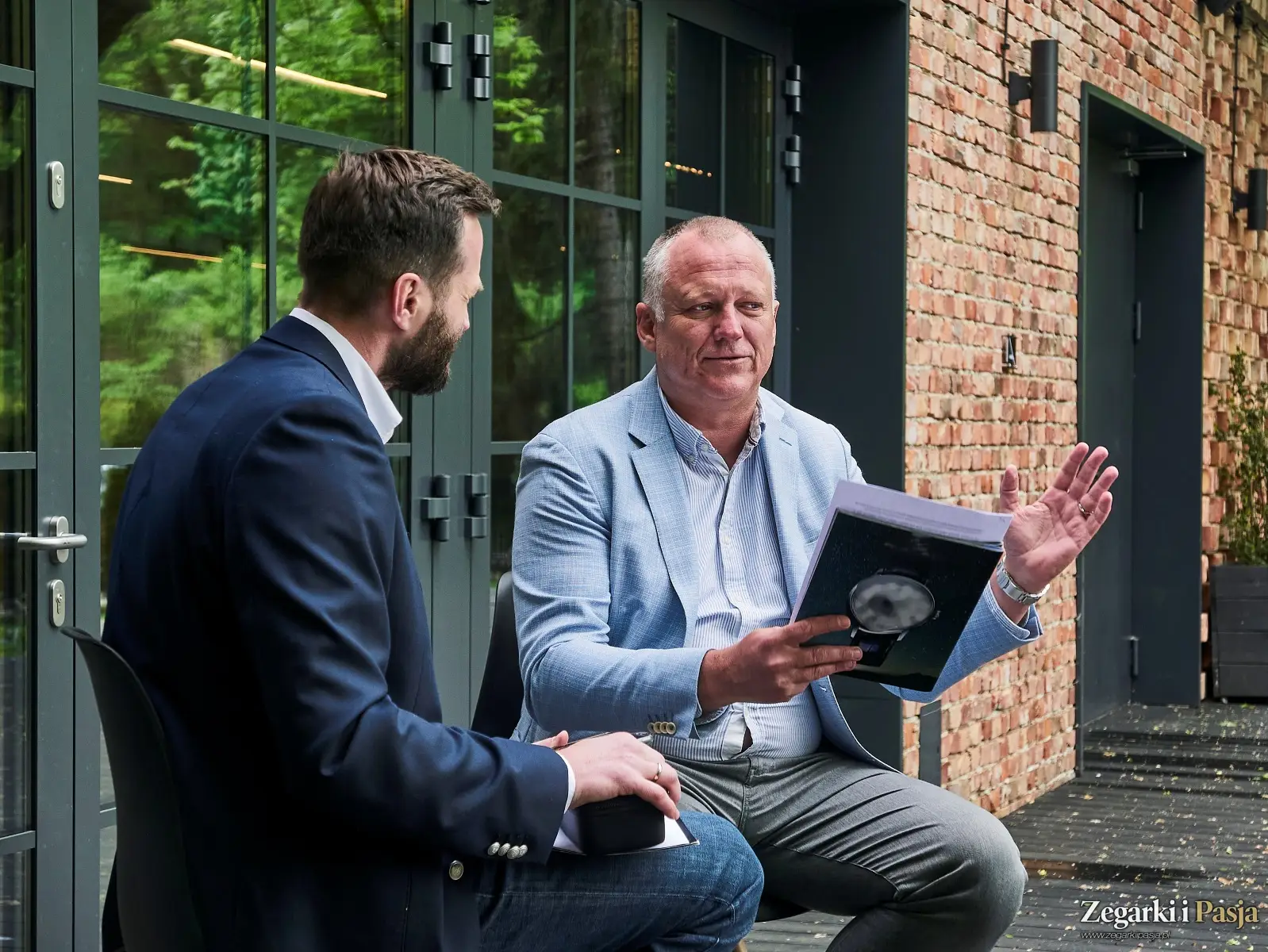
So, the full range.
We recently tested the new Tissot T-Touch Sport which combines a regular quartz watch with smart features. Is Certina thinking about something like that?
No. Although we should never say never. But right now, I personally don’t feel like doing that. I want to leave that to the tech companies. They have the power and knowledge in that area.
So let’s talk about the luxury market, because recently the concept of luxury has been redefined. How does Certina cater to changing consumer preferences in the world of luxury while maintaining accessibility and affordability?
I think our goal has always been to offer the best possible value for money and we always think about that when creating new products, when entering new markets. The goal is always to offer one of the best price-to-quality ratios on the market.
We don’t chase trends forcefully. We are a brand with history. In our opinion, there’s no need to introduce four new collections a year or follow the seasons. We work more for the long term. We adapt to changes in the watch industry, of course, we also adapt to colors if there is a trend. Green is trendy and quite popular now, but for us it’s also a historical color. But really, we don’t set trends or follow trends. We just adapt our products.
And what exactly do you mean by “the concept of luxury”?
That it’s no longer just mass luxury. What do you mean by that?
You know, it’s more than that.
The trend of "quiet luxury" but also I mean young people who have significant financial means. There are teenagers or 20-somethings who have considerable financial resources. Today, often just being luxurious isn’t enough. The fact that something costs a million today doesn’t necessarily mean it’s a very exclusive product for some people.
Yes, that’s true.
I think nowadays luxury is also largely about experiences.
But on the other hand, since the pandemic ended we still see huge lines outside the stores of big fashion brands and so on. So, something has changed, but on the other hand people still reach for luxury brands just as they did before. We said that during the pandemic we would stop flying, but as soon as normalcy returned, we travel… even more.
We just are who we are, that’s our nature.
There’s something about it.
OK, my next question is somewhat related to what you mentioned earlier, that while working for the previous brand you didn’t use e-commerce. How does Certina utilize online platforms and e-commerce in this rapidly changing digital landscape to reach new customers and engage with existing ones?
That's why we're really focused on that right now, because digital gives us the ability to reach consumers directly. This way, we can tell them our story.
We can also communicate directly with consumers and so on. This is really one of our goals, and I think we are in an excellent price segment for e-commerce. In Poland we launched our own e-com about a year and a half ago.
The Certina online store, right?
Yes. And the online store is showing very promising results. Now you can buy our products directly on our website, certina.pl. It has brought really promising results. So yes, we are present online.
We can also see that after the pandemic ECOM sales stabilized while traditional sales increased. So, people still want to go to stores, they still want to “feel” the product, they want salespeople to advise them. So it’s really a mix of channels, we will never sell exclusively online nor will we ever sell exclusively traditionally. It’s a combination.
So the ROPO model, research online purchase offline, is doing well. That’s interesting because when the pandemic started, all stores were closed...
...and people had a lot of time. Browsing the Internet, we had a lot of fun.
But ultimately, from what you’re saying, people still prefer in-store shopping.
Yes, exactly.
But it depends on the consumer. So we need to be accessible to every customer.
So, do you have plans for a Certina monobrand store?
No, not yet. But we have several multi-brand stores run by the Swatch Group, corporate stores.

OK. The next question, I think, will also be interesting as it’s related to this topic.
The evolving digital landscape is a fact, but can it replace good old meetings and fairs? After the disappearance of Baselworld, does your brand plan to participate in other international watch events?
No. We do not plan to participate in international fairs.
This model worked well in the past. In terms of sales these events generated for our brands, they no longer reached the levels we would be interested in. Of course, it was very interesting, for example, to meet all the journalists in one week, and as far as I remember, everyone was always there.
But in terms of sales it was decreasing, because we do not deliver all our products at the same time, we have different releases throughout the year.
But what we do, because we are part of the Swatch Group, is that in many countries where local fairs take place, all mid-range brands are in one hotel, we are also there and our customers and retailers come and order their products.
But participation in international watch fairs – no, I don’t think so.
Alright, I understand.
I can’t help but ask about sustainability. We see increasing interest in this topic across various industries. How does Certina incorporate sustainable practices into its production processes and product designs?
This is a major concern and challenge for us, and we are not perfect.
No one is.
No one is, that’s true. I think actions like greenwashing, etc. are risky. So, we are very aware of that. We are taking real action. For example, some of our straps are made from Tide Ocean Material® which is produced from plastic collected from the ocean and processed into synthetic straps in an eco-friendly way. We have been working with the Sea Turtle Conservancy for many years, an organization dedicated to the protection of sea turtles and their habitats. Every year, we present a special edition watch dedicated to this collaboration and a portion of the proceeds from its sale is donated to STC. All our boxes and display materials are made from recycled materials.
We are not perfect, but we are doing our best. We are trying to move in this direction and it is part of our responsibility.
And is it really important? I mean the whole industry, not just Certina. As the representative of the industry, do you feel that there is more and more attention and pressure on this type of actions?
Yes. As part of the Swatch Group, because our group is listed on the stock exchange, we now need to have a sustainability report as well.
But does it really change anything, or is it more about PR?
I’ll repeat once again: no one is perfect. I think everyone at our level of business has to take necessary steps. But of course, there are also cases of greenwashing in the industry, which is why we at Certina try not to communicate too much, because I feel we are not perfect yet. But we just give our best at our level.
One alone won't make a huge change, but the efforts of all can.
Exactly.
So, finally, let’s look to the future.
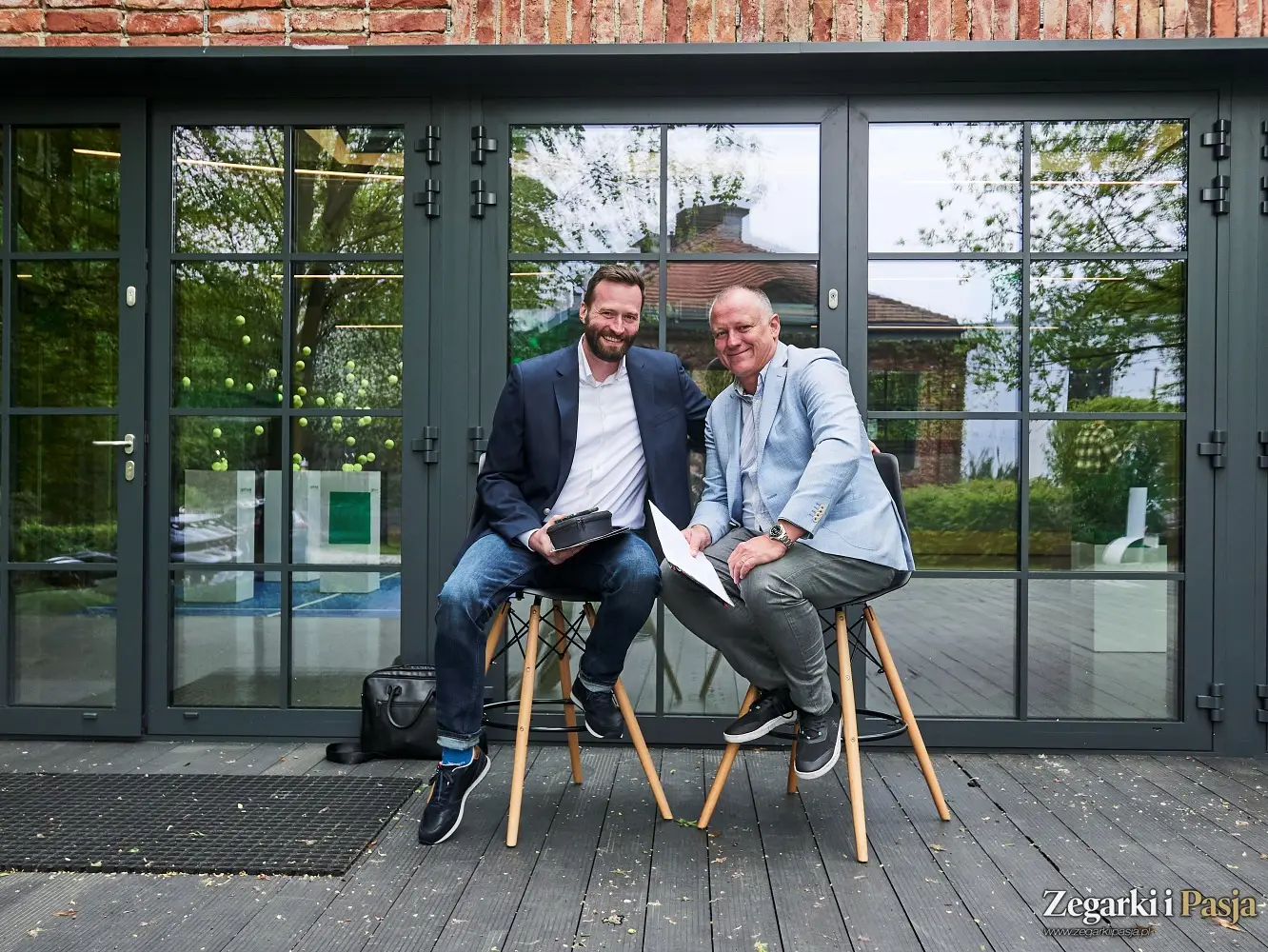
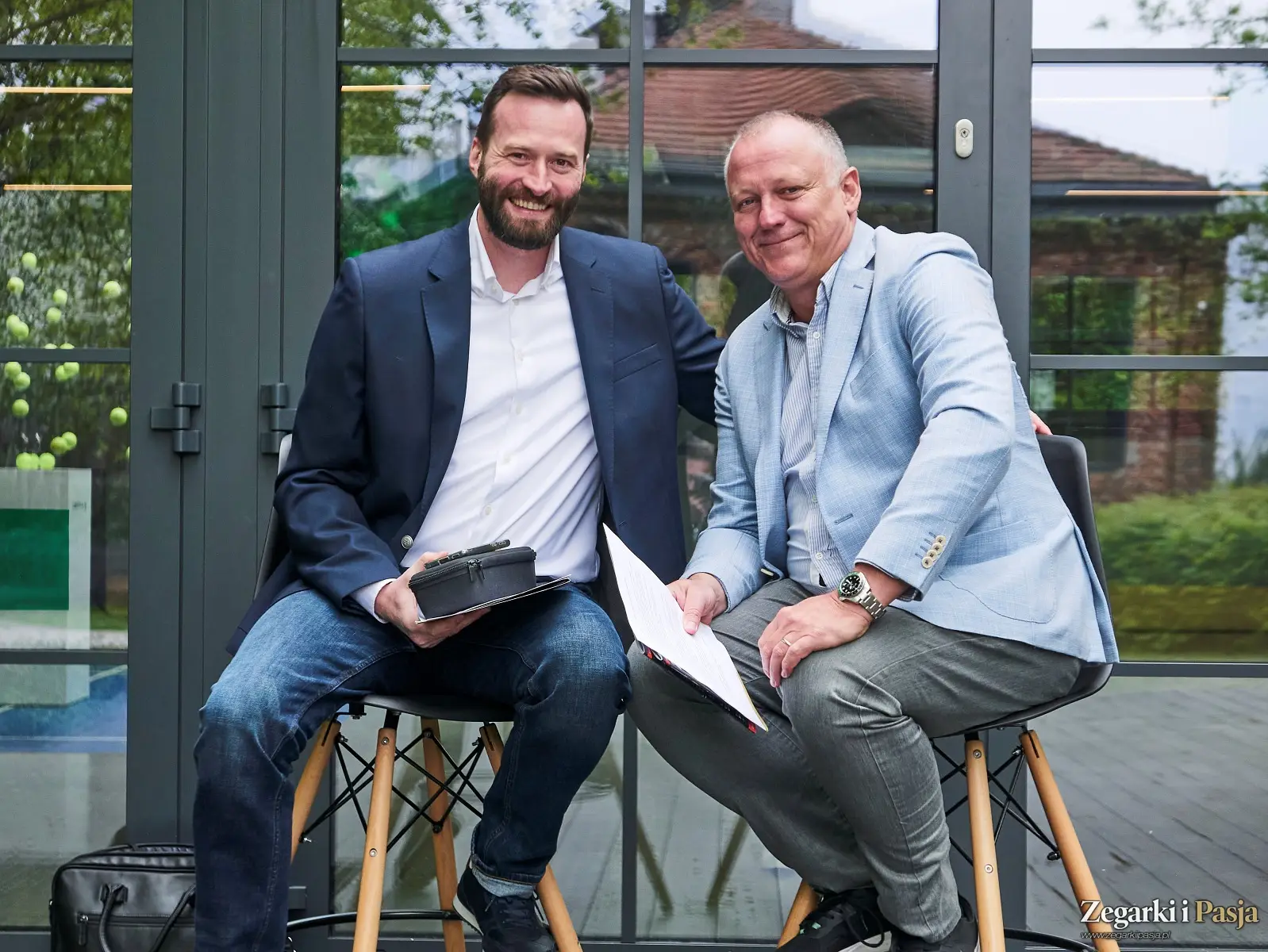
What are the key goals and strategy for Certina in the coming years, especially regarding emerging markets and consumer behaviors?
As I said earlier, we continue to offer products with the best possible quality-to-price ratio. We do our own thing. We don’t try to capture the market in every country. We focus on certain countries and grow the brand step by step.
For me, the main goal is of course to increase brand awareness where we already are present and to grow it. We still have many markets where Certina is not present, which I see as having great potential. For example, we started in the USA just two or three years ago and it looks very promising. The results are good. So we do it step by step.
Although we have the right production capacity, we cannot double production tomorrow. We must do it step by step, gaining market shares and consolidating what we have.
And emerging markets? Hmm, maybe one day India, which will be the next El Dorado. But since I have been in the watch industry, everyone says India is El Dorado, but in reality it’s a very complicated market and everyone has been waiting for years for it to be conquered.
At the end I wanted to ask for advice.
Certina has been on the market for over 130 years. Our portal will celebrate its 10th anniversary in 2024. What should we do to survive the next 120 years?
(Laughs). I think you need to be flexible. You need to listen to the market.
Of course, you need to have a vision and a direction.
And I think if you stick to that, adapting to market needs, I see a good future for your website and your entire publishing house and for our brand as well.
OK, great. That sounds optimistic.
Thank you very much for the conversation and your time!
…
(ENG) This interview was first published in Polish on our website in April 2024. It can be found here. Due to its popularity, we have decided to also publish the original English version so that readers around the world can read it.
(POL) Powyższy wywiad pierwszy raz ukazał się w portalu w kwietniu 2024. Można zapoznać się z nim tu - rozmowa z Markiem Aellenem, CEO Certina. Z racji swojej poczytności zdecydowaliśmy się zaprezentować także jego wersję w języku angielskim, aby mogli się z nim zapoznać czytelnicy z całego świata.



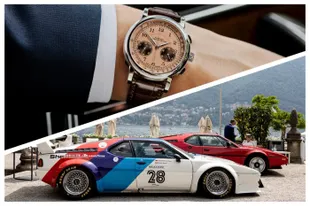
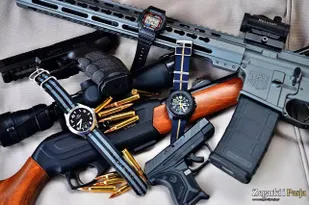











































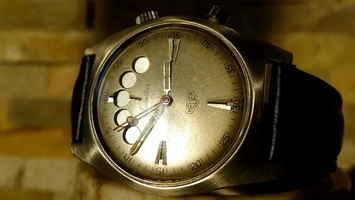


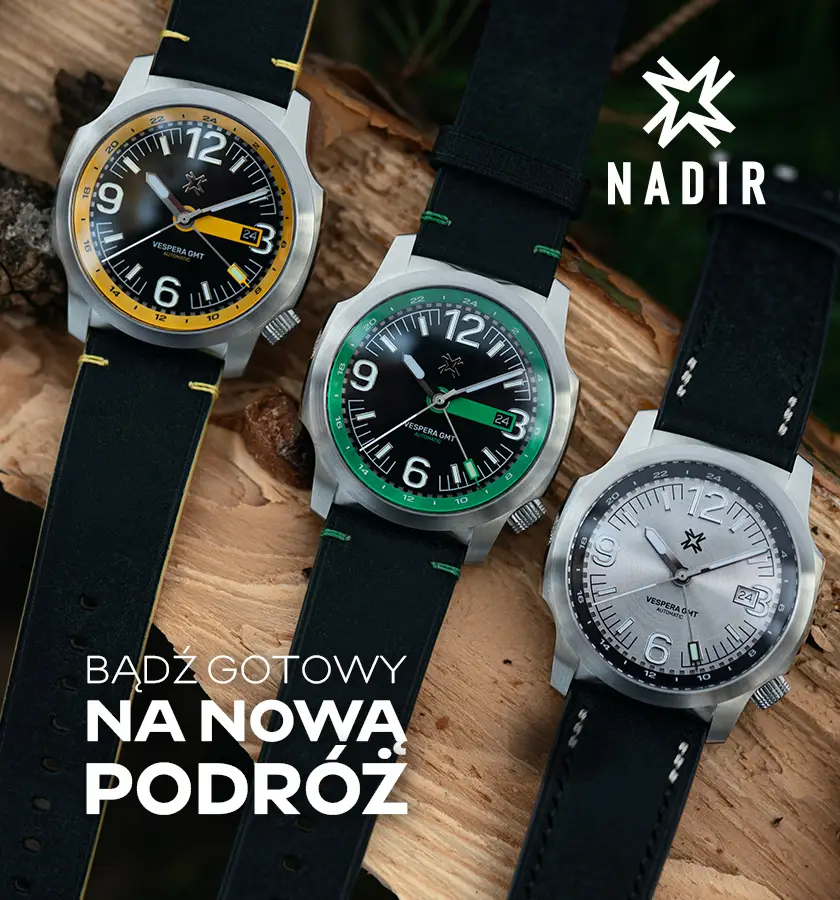
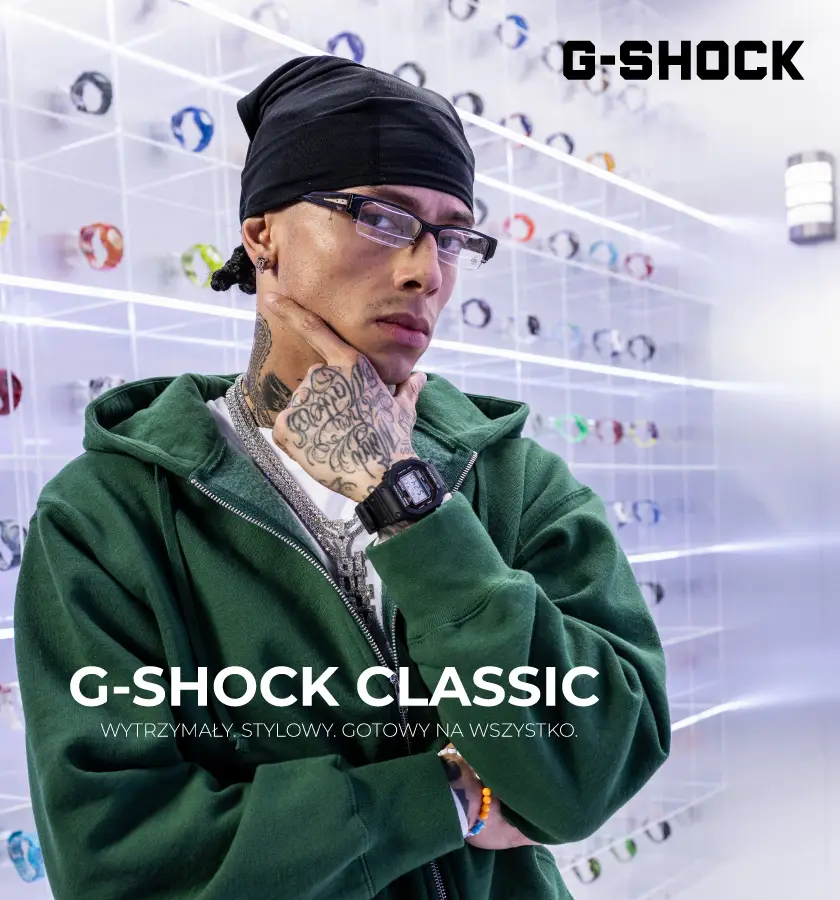





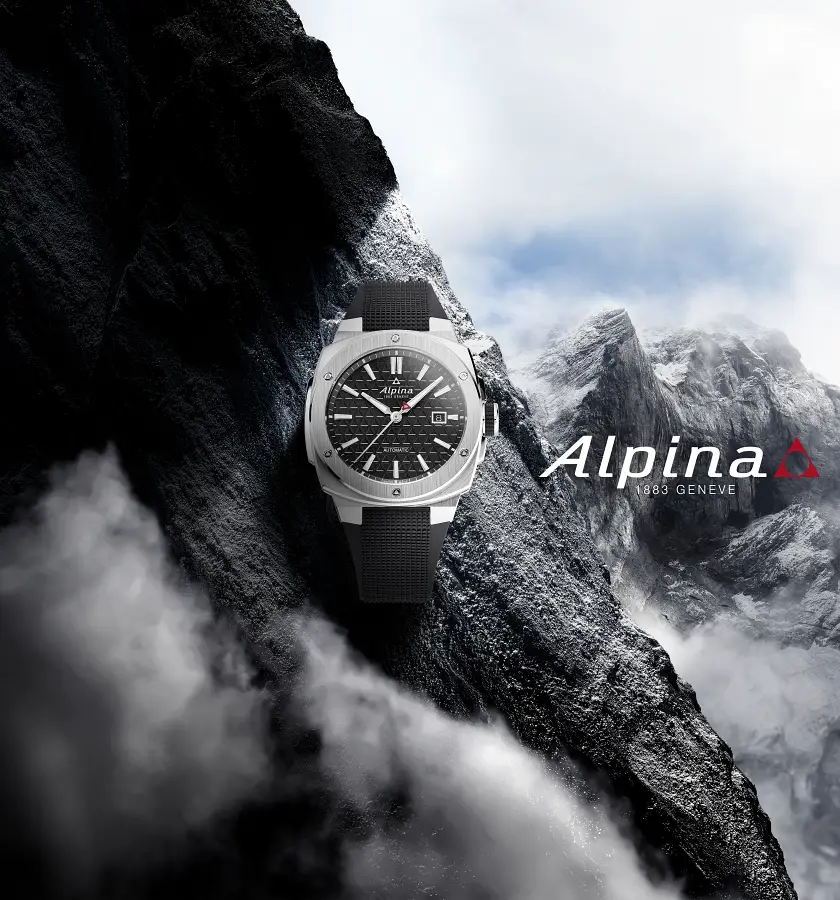
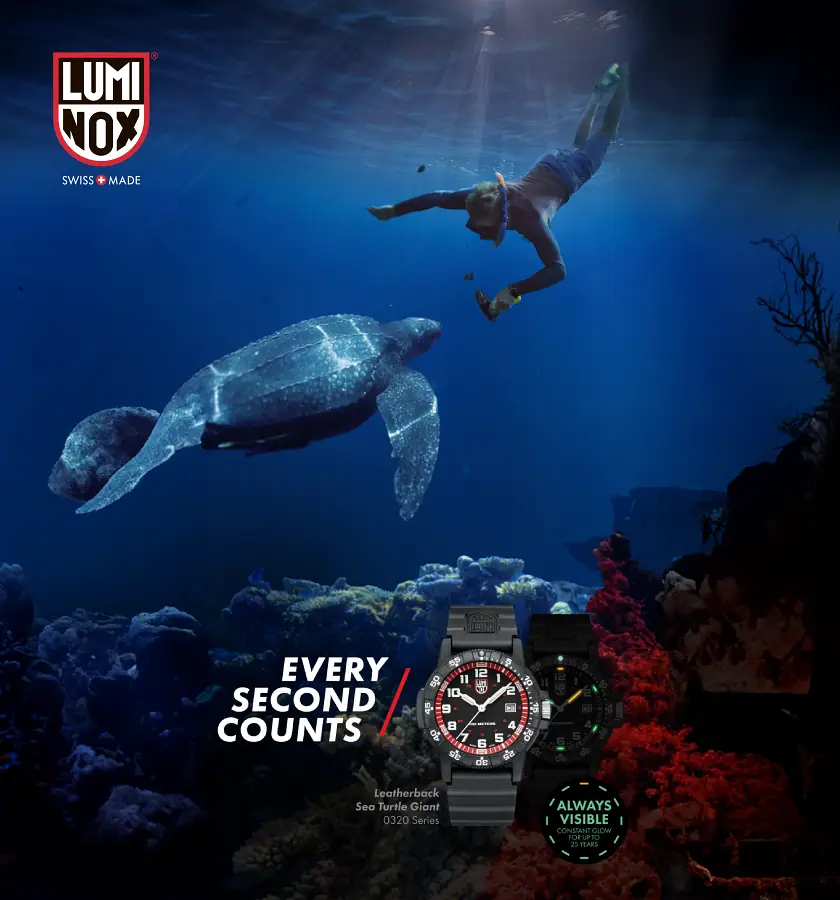




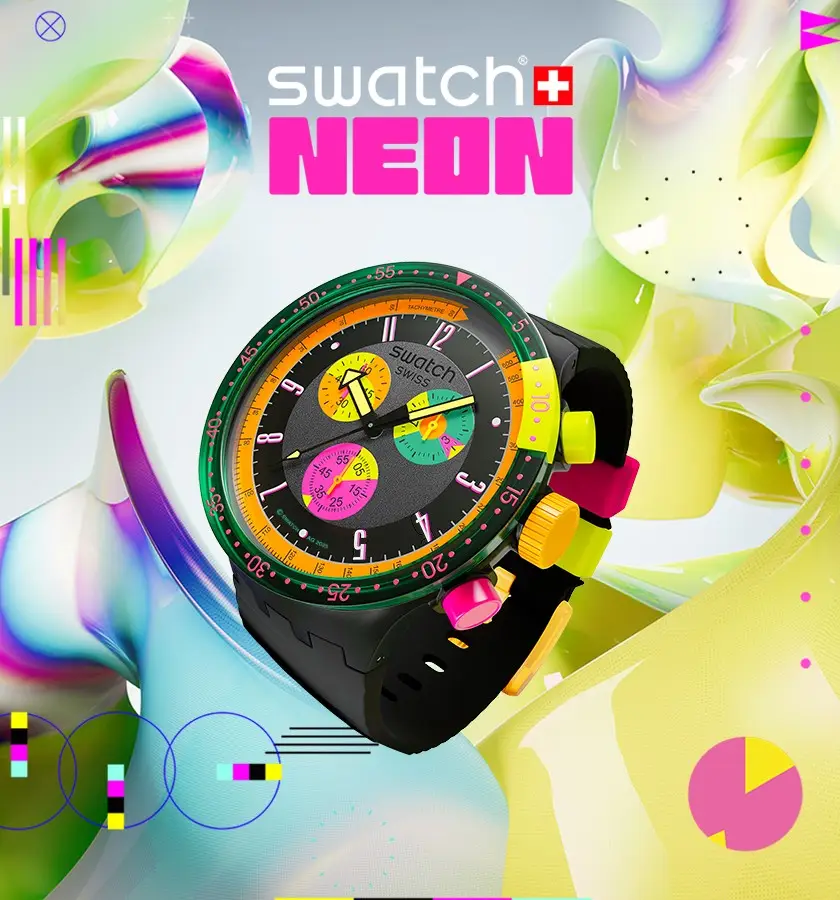






 INSTAGRAMIE
INSTAGRAMIE










 greenlogic.eu
greenlogic.eu